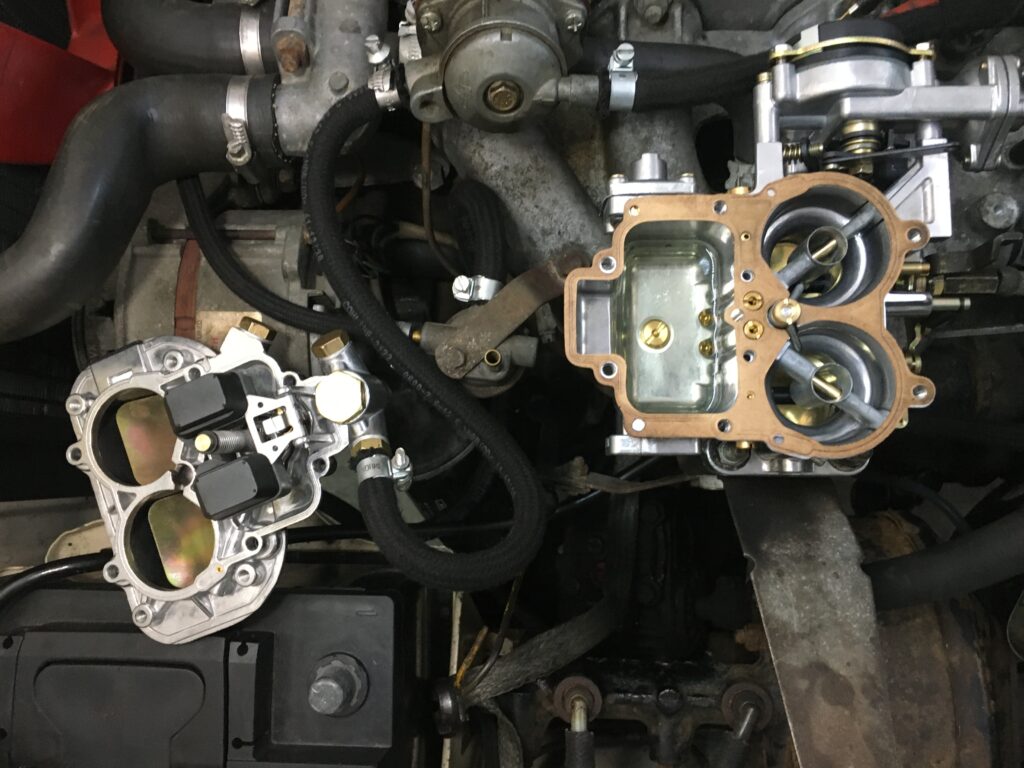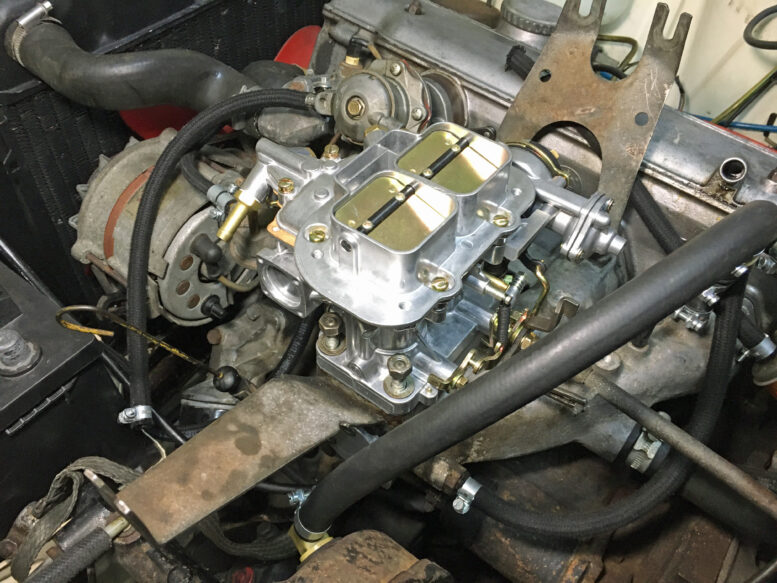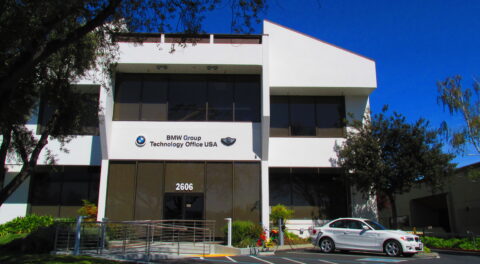Last week, I described the hard-starting problem in Hampton, my 49,000-mile survivor ’73 2002, that led me to take the surprising step of removing its Weber DGAV (water choke) carburetor and buying and installing one of those inexpensive Chinese-made Weber clones. My logic was that I’d isolated the problem to a fuel delivery issue as opposed to spark. The car had sat in a barn for ten years before I bought it, and I’d blown the Weber’s passages and jets out with compressed air but hadn’t dismantled, tanked, and rebuilt it, so the possibility of it being a carburetor issue made sense.
I felt like I’d tried everything reasonable, and for $115 on Amazon, I found this Nenkuten clone Weber DGEV (electric choke) whose reviews were good and included reports that it accepted standard Weber jets. I joked that I was taking one for the team (“The Hack Mechanic… living on the edge… for you”), but there is a certain truth to it. Over a hundred dollars out of my pocket isn’t a lot to throw at a problem, but the fact that I can tell the story mitigates the expense. (You may be shocked to learn that I’m actually paid to write these pieces. Hey, some days I can’t believe it either.)
As I explained in Part I, the Nenkuten-clone Weber looked good and bolted directly to the intake manifold with no issues. The only modification necessary was swapping the “C”-shaped linkage bracket for an “L”-shaped one and screwing a hex nut with a ball linkage head onto the throttle shaft, both of which I had from a parts Weber, so I didn’t even need to dismantle the Weber that had been on the car. I primed it by temporarily connecting an electric fuel pump to make sure the float bowl got filled. I blipped the throttle a few times to squirt gas down the throat, and the car started easily, then stalled. As with any carb, it was necessary to do the expected fiddling with the choke, the fast idle screw that sits on the choke’s cam linkage, and the idle speed screw, but it didn’t seem to have the starting problem that appeared to plague the genuine Weber.
Over the next few days, I came out to the 45-ish degree garage first thing in the morning, pumped the accelerator pedal twice, started the car, and tweaked the fast idle and idle as necessary. I got it to the point where it would start instantly on the first crank, settle into a cold idle, warm up, and warm-idle flawlessly when I blipped the gas to disengage the choke’s fast idle cam. The video can be seen here. I was ecstatic. Hell, I was nearly ready to get a whole-body Nenkuten tattoo and run naked through the next vintage BMW event I attended.
As I began driving the car, though, it became clear that it didn’t run as well as the original Weber DGAV—there was a bit of buffeting at even throttle, and it stumbled pretty obviously when I mashed the gas and the second barrel kicked in. Those things, however, don’t automatically damn the inexpensive Chinese-made Nenkuten. Very few carbs work perfectly out of the box. And as I said last week, there was nothing in the ad that implied that this carb was jetted for a 2002, and even if it was, as I described in past pieces, I’d re-jetted the DGAV to solve the lean-running buffeting issue. I did what I thought was easiest and best: I transferred all of the jets—the two idles, the two mains, and the two air correctors but not the emulsion tubes—from the DGAV over to the Nenkuten. The lean-running hesitation at even throttle went away, and the gas-mashing stumble was better, but the car still had a hesitation when I opened up the second barrel that I didn’t remember the DGAV having. I ordered a larger main jet for the secondary barrel.

Open wide and surrender your jets!
I continued to test the Nenkuten’s starting robustness. I’d try it dead-cold first thing in the morning, shut it off cold and restart it, let it warm up, shut it off, restart it, drive it, shut it off, restart it. I couldn’t break it. I felt like Flounder in Animal House.
And then, something went south. I needed to move the M Coupe, which was parked in front of Hampton in the garage. Hampton started right up, but this time I didn’t let it fully warm up and come off the fast idle cam. Instead, I backed it out while it was still in warm-up. It struggled to rev, and then stalled in the street. I couldn’t get it restarted. Hampton’s battery is old and weak, and repeated cranking quickly runs it down. I had to roll the car back into the garage to trouble-shoot it.
I could see that blipping the throttle squirted gas down the throat, so it clearly had fuel in the float bowl, but I pulled the top off just to be sure. The level in the bowl looked reasonable. I checked for spark coming out of the coil as well as at the plugs. I eventually got it to fire up with starting fluid, but even that wasn’t easy. It was very odd.
When the bigger main jet arrived the following day, I installed it in the hole for the secondary, then held my breath as I twisted the key. It started easily. The test drive with the bigger jet showed that mashed-open throttle response seemed a bit better, but still wasn’t as good as I remembered it with the genuine Weber. I decided that, when I was certain the starting problem was gone, as a test I’d swap the genuine DGAV back and compare throttle response as well as see if all the hard-starting returned with the original carb. I shut off and restarted Hampton four times. Each time it roared to life as easily as a Honda lawnmower on a warm day.
About four hours later, I tried a restart. The problem came back, big time. Two pumps on the pedal, no start. I again visually confirmed that the choke was closed, the fast-idle cam was engaged, and fuel was being squirted. I checked for spark out of the coil. I checked the dwell. I hot-wired the coil to the battery. I ran a jumper wire from the negative side of the coil to the condenser. I replaced the coil with a spare. I blasted starting fluid down the throat. I checked that the plugs weren’t fouled. I yanked off the brake booster hose and capped the port just in case there was a massive vacuum leak through the booster. Nothing made a difference. It did not want to start. It was night and day from the “bless your heart you’ve turned into a Honda lawnmower” moment.
I put the battery back on charge and left the car alone for two days. This morning I tried to start it. The engine burbled a bit, but certainly didn’t jump to life with two pumps and a twist of the key like it did before. And at this point, the battery is no longer taking much of a charge and thus needs to be replaced. I used to swap batteries between the cars all the time, but with my back issues, that’s no longer a good idea. Unless it’s an emergency, they stay in their wells until they need to be replaced.
So, the Nenkuten Weber clone appeared to have solved a longstanding hard-starting problem until the problem came back, thus likely decoupling the carburetor as the source of the problem in the first place. It works well, but possibly not quite as well as the real thing in terms of full-throttle response, though that may still be a jetting or an adjustment issue. So it’s too early for me to say either “it solved my problem” or “buy one, it works just as well as the real thing.”
And that, unfortunately, is where I need to leave things for today. I’ll pick this back up next week. On the one hand, it’s a good thing when an intermittent problem goes hard failure because it becomes easier to diagnose. On the other hand, it’s bloody strange. My best guess right now is that good spark out of the coil may not be translating into good spark into the cylinders. We shall see.
—Rob Siegel
____________________________________
Rob’s newest book, The Best of The Hack Mechanic, is available here on Amazon, as are his seven other books. Signed copies can be ordered directly from Rob here.
Tags: carburetor replacement Hack Mechanic non-oem




















